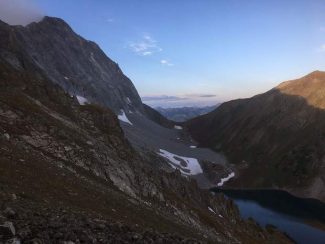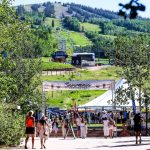Aspen’s Elk Mountains are ‘crux’ of Colorado 14ers, expert says
New data reveals low relative usage compared to rest of state

Colorado Fourteeners Initiative/Courtesy photo
Despite Aspen’s global fame, the local stock of 14ers draws fewer recreationists to their slopes than the rest of the state.
The Elk Mountain Range’s 14,000-foot peaks — which include Castle, Maroon, North Maroon, Capitol, Snowmass, and Pyramid peaks — see the second-fewest yearly hikes of all of Colorado’s 14,000-foot mountain groupings. The Colorado Fourteeners Initiative estimated the Elk Mountain’s 14ers saw roughly 9,000 “hiker use days,” or instances in which a hiker took to one of the mountains. A hiker who climbs multiple times would be tallied each time.
“They’re hard, they’re steep, they have notoriously brittle rock,” Colorado Fourteeners Initiative Executive Director Lloyd Athearn said of the Elk’s 14ers. “So, there’s just far more danger and peril in climbing those mountains than in taking a leisurely stroll up Grays Peak.”
In comparison, the Front Range’s six 14ers saw 86,500 hiker use days, and the Sawatch Range’s 13 14ers saw 76,500.
Between 2002 and mid-2022, the Elk Mountains saw 31 climber fatalities, more than any other of Colorado’s 14,000-foot groupings, according to data collected by Athearn. The Front Range’s 14ers saw 30 fatalities in the same period, with 23 coming from Longs Peak. The Sangre de Cristo Range’s 14ers saw 24.
“Those are things where any mistake, any loose rock, any misplaced foot, can lead to fatalities,” he said of the peaks’ difficulty.
He noted that Longs Peak sees a particularly high number of fatalities due to its high traffic and abundance of technical routes. He added that the data is a “snapshot” of an official number, as it’s based on news and sheriffs’ reports he collected.
Mountain Rescue Aspen President Jordan White, who has climbed every one of the state’s 58 14ers, called the Elk Mountain 14ers the “crux.”
“Definitely the Elks are the crux between the loose rock, the route finding, and just the overall difficulty of the climbing,” he said.
He said the number-one accident trend he sees in the Elks is separation — when a group splits up into individuals if one member decides to descend while another keeps climbing.
“(And) one of them ends up in some version of trouble,” he said.
Safety comes down to proper planning and climbing within one’s ability level, he added.
“And even with that, sometimes you still get unlucky,” he said.
In 2017 — what Colorado Fourteeners Initiative viewed as an “alarm bell” year — the Elk Mountain’s 14ers saw seven fatalities, with two on the Maroon Bells and five on Capitol Peak. Many of Capitol’s fatalities occurred when individuals attempted to leave the standard route and take a shortcut down to Capitol Lake, White said.
That year prompted the Colorado Fourteeners Initiative to educate the public on Elk Range climbing.
“Trying to really get the word out that there is no such thing as a shortcut on mountains that have been climbed for over 100 years,” Athearn said
White relied on the old Capitol Peak quote to remind the public to stay on trail: “If there was a shortcut on Capitol, it’d be the standard route,” he said.
Skyler Stark-Ragsdale can be reached at 970-429-9152 or email him at sstark-ragsdale@aspentimes.com.
Aspen’s Elk Mountains are ‘crux’ of Colorado 14ers, expert says
Despite Aspen’s global fame, the local stock of 14ers draws fewer recreationists to their slopes than the rest of the state.










